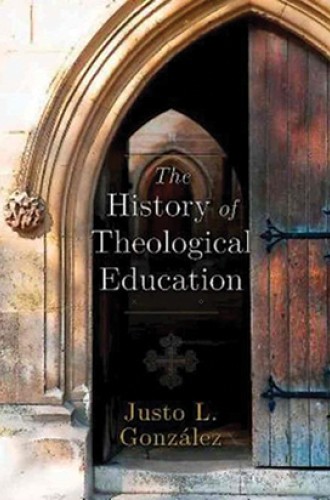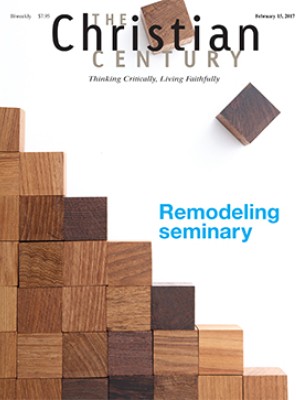A bright future for (some) seminaries
If theological education’s prospects look dim, we’re defining it too narrowly.
One of the most significant shifts in theological education in the United States over the past 50 years, Justo González argues, is the entrance of large numbers of people of color into seminaries. This claim is important because the time is approaching when the United States will not have a single racial or ethnic majority. Strikingly, the white population will lose its majority position for the first time since the nation’s founding. González is clear-eyed about the fact that the traditional white establishment churches and their institutions of theological education largely look at these changes and see a crisis. However, he argues, it’s not a crisis for the wider enterprise of theological education.
González, who is a professor emeritus at Columbia Theological Seminary, exemplifies these shifts. He tells about his own experience as a graduate student and then young faculty member with no Hispanic colleagues and access to few books in Spanish or on the history of Hispanic Christians in the Americas. Now, to his delight, there are more scholars of color—and more organizations, journals, books, and conferences produced by these scholars—than he can keep up with. A study by the Association of Theological Schools reveals that the percentage of racial or ethnic minority students enrolled in ATS-accredited schools has grown from 16 percent to nearly 30 percent in the past 20 years. Numbers of racial or ethnic minority faculty have doubled in that same period.
Read our latest issue or browse back issues.
In González’s view, the fate of churches and their related seminaries can be divided according to formal patterns of required ministerial education. Denominations that traditionally required seminary education for ordination face declining membership (and their seminaries are largely seeing declining enrollment as well). Those that generally have not required seminary education—especially but not only the Pentecostal traditions—are growing. Thousands of ministers are being licensed or ordained for ministry without formal theological education, and when they do seek it out, it is likely in the form of nondegree programs from alternative institutions. As a consequence, González argues, the practical monopoly of ATS-accredited schools and programs has decreasing power.
For traditional seminaries and divinity schools, circumstances require the “total reorientation and redefinition of theological studies and ministerial training.” A looming justice question is the “anomaly” regarding resources available to white students versus students of color, with the vast majority of available resources “in terms of faculty, libraries, buildings, endowments, and so forth available mostly to a declining student population.”
Given these trends, the future of theological education can be viewed as either dim or bright. It’s dim if we only look at how traditional schools are now organized, but it’s bright if we consider a wider view of the diverse settings in which religious leaders are trained—what González calls the “continuum” from congregational catechesis to university endowed chairs.
The Episcopal Church exemplifies the precipitous decline among traditional European-origin churches. Over the past 50 years it has lost 50 percent of its membership, and in the last decade, nearly 20 percent, signaling an accelerating pace of decline. And those who are still members tend to have a looser connection. According to a recent Pew study, only 3 percent of Episcopal Church members claim a high level of commitment and participation. Catholic and evangelical traditions have also experienced declines among their white American membership.
Of course, some mainline congregations are growing rather than declining. Sociologist Kirk Hadaway reports that even among Episcopal congregations, at least 20 percent are growing. While these gains do not offset the losses elsewhere, they are important sources of wisdom about navigating ministry in a fast-changing religious context.
Even more important to note is the growth among nonmainline traditions. The Assembly of God is a fast-growing Pentecostal movement born in Hot Springs, Arkansas, in the early decades of the 20th century. Over the same 50-year period in which the Episcopal Church declined from around 3.6 to 1.8 million members, the AG in the United States grew from 572,123 to just over 3 million. Its global growth has been equally remarkable, with a worldwide membership of nearly 68 million, making it the fourth largest Christian communion globally (just below the Anglicans at 85 million) and the largest Pentecostal church by far. Its growth in the United States has been fueled by Latinos, with current estimates claiming that as many as 600,000 Latinos join the AG per year (many from nominal Catholic membership).
Traditional mainline church-related seminaries are struggling along with their churches. Over the past decade, the ten Episcopal seminaries have declined in overall enrollment by almost 30 percent. General Theological Seminary in New York, the oldest of the ten, has experienced a 66 percent decline, was forced to sell off portions of its historic lower Manhattan campus, and teetered on the brink of closing in 2014. Across the more than 250 schools accredited by ATS, the M.Div. is in steady decline (7 percent over the last five years). Yet other degrees and certificates offered by seminaries are on the rise. In these same schools, academic and professional M.A. degrees have grown 5 percent and 7 percent respectively over the past five years.
There is also a world of theological education outside the ATS member schools, especially serving immigrants from the Global South. The oldest Latino Pentecostal school for ministry, the Latin American Bible Institute (LABI College), and its sister organization, the Latin American Theological Seminary, both in La Puente, California, offer a range of certificate and degree programs on campus and through a broad web of extension sites in the United States and Mexico as well as online. Many of their students are bivocational and already in ministry, either lay or ordained, when they seek out theological education. These ministers are seeking deeper knowledge and skills for ministries in which they are already immersed, and which they usually continue to lead throughout the course of their studies.
González helped found the Asociación para La Educación Teológica Hispana, now led by Fernando A. Cascante, which supports and expands the model of community-based, contextual theological education that is the hallmark of Bible institute education. Such an approach offers a way for other theological schools to rethink both curricular structure and pedagogy, which too often separate course work from the practice of ministry, saved till after graduation and denominational certification.
The slight size of The History of Theological Education belies its significance. González is a master of sources spanning 2,000 years of theological education. He is also attuned to the acute challenges facing the church. His wisdom as a historian and leading Hispanic theologian gives him astute perspective on what is to come. Theological education, widely conceived, is not in crisis. It is vibrant and growing. The question is: Will those who see only crisis have the imagination and courage to make changes that align with what God is doing in this time?







